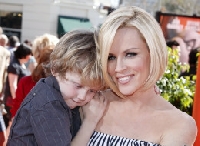
Autism is a developmental disorder of unknown origins
A “developmental disorder” means regular growth is interrupted during childhood. Is autism a developmental disorder? Yes.
Those afflicted experience impaired progress regarding social interactions, communicating and behavior. The impairment depends upon the degree of autism.
This disorder impacts a single area of growth or several. When the latter is true, this is pervasive development disorder.
Parents should acknowledge and begin work with the child early on because the autistic child benefits from speech, physical and occupation therapy as well as from the use of early intervention tools for play therapy, behavior modification and, sometimes, medication.
Issues
The brain of the autistic child develops differently and processes information differently. This causes difficulty and delays in communicating and use of language. Some autistic people engage in repetitive or odd actions. Learning can be challenging.
The cause is unknown. It may be the result of both environmental factors and genetics. When a couple has one child with this condition, there is a 30 percent chance future children will have it.
Some believe individuals are born with an inclination towards this disorder, which progresses when the person is exposed to something in the environment; however, no one knows what that ‘something’ is.
There are those who have no family history yet they acquire it. This may indicate a genetic mutation has taken place. Mutations can be inherited; other times they pop up for no reason.
The Cause?
There are many theories regarding the origin of this condition including allergies, viruses or vaccines, but none has been systematically proven. In 1998, it was asserted there is a connection between autism and vaccines but this suggestion was withdrawn by the journal publishing it due to defective research.
How Can You Tell?
By the time a child is two or three years old, signs of this disorder are decipherable. Official screening can start as early as 16 months of age if parents think their child is afflicted.
Signs of austim include cyclical or curious movements including spinning, hand flapping and tapping; difficulty playing with or relating to others; failure to point to objects in an effort to call attention to them; no eye contract or very little eye contact and not meeting developmental milestones or forgetting how to do things the child has already learned.
Other signs are failure to use language as a child his age normally would and playing with toys in an unusual or repetitive manner. The autistic child appears to be in his own world and has very little interest in investigating his surroundings.
~
Those with the disorder do not respond to emotional prompts in human social interactions because they do not pay attention to the cues as others would. Kids with this condition zero in on the mouth instead of the eyes when engaging with another person.
The child misinterprets or does not take in subtle social cues, such as a smile. Understanding social cues helps children comprehend relationships and interactions. The child may not respond appropriately because he cannot decode facial expressions, gestures and other non-verbal communications.
Diagnosis
Get your child diagnosed. The sooner the better. This maximizes his potential. Medicine may be given to treat various behaviors including aggression toward oneself or toward others; mood swings; obsessive-compulsive behaviors and inattention.
Some find non-conventional therapy helpful including changing the child’s diet, giving him supplements and engaging him in art, music and animal therapy.
This condition is not curable but great strides have taken place in regard to treatment of children with this disorder.
